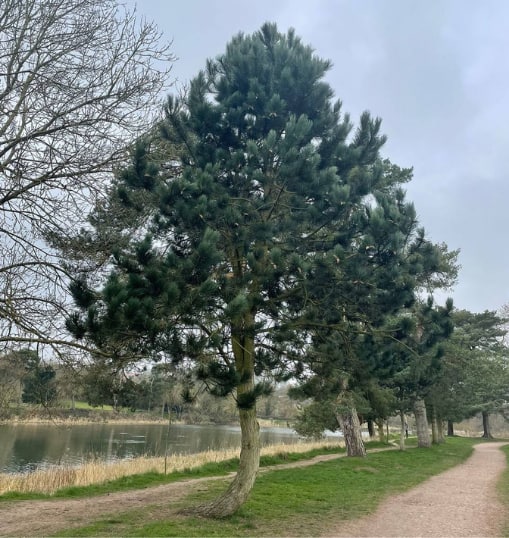Crown reduction is a vital tree care technique that involves the careful trimming of the tree’s canopy to reduce its size. This not only improves the health of the tree but also enhances its aesthetic appeal and safety. However, not all trees require crown reduction, and it’s important to know when it’s necessary. At PW Tree Surgeons, based in Paddock Wood, Kent, we provide expert tree care services, including crown reduction, ensuring your trees remain healthy and well-maintained.
In this blog, we’ll outline five key signs that indicate your tree may be ready for crown reduction.
1. Excessive Growth or Overcrowding
One of the most common reasons for crown reduction is when a tree’s canopy has become too large or dense. Overgrown canopies can block sunlight and restrict airflow, which can affect the health of the tree and the plants around it. Additionally, an overcrowded canopy may cause branches to compete for space, leading to weak or poorly positioned limbs that are more prone to breakage.
If your tree’s growth is impacting nearby plants or creating a dense canopy that affects its overall health, crown reduction may be necessary to restore balance.
2. Signs of Structural Weakness
Trees that have grown too large for their structure may begin to show signs of weakness. This could include long, heavy branches that are at risk of breaking, or a canopy that is leaning to one side due to the weight of overgrown limbs. Structural weakness can pose a safety risk, especially during storms or high winds.
Crown reduction helps by lightening the load on the tree’s branches, reducing the risk of damage and promoting a more balanced, stable structure.
3. Proximity to Buildings or Power Lines
Trees that are growing too close to buildings, power lines, or other structures can pose a serious hazard. Overgrown branches can cause damage to property or interfere with utility lines, especially during inclement weather. If your tree is encroaching on your home, garage, or power lines, crown reduction can be a necessary measure to reduce the risk of accidents.
By carefully trimming back the canopy, crown reduction ensures that your tree remains a safe distance from nearby structures without compromising its health or appearance.
4. Reduced Airflow or Light Penetration
A dense canopy can significantly reduce airflow and light penetration, both of which are essential for the health of the tree and the surrounding landscape. Poor airflow can lead to increased moisture levels within the canopy, creating an environment where fungal diseases and pests thrive. Similarly, reduced sunlight can hinder photosynthesis, affecting the overall vitality of the tree.
Crown reduction can help by thinning out the canopy, allowing more light to reach the tree and improving air circulation, which promotes a healthier environment for both the tree and surrounding plants.
5. Tree Health and Disease Management
If your tree is showing signs of disease or pest infestation, crown reduction may be part of a broader management plan. Removing infected or damaged parts of the tree can prevent the spread of disease and encourage new, healthy growth. Additionally, thinning out the canopy can make it easier to spot signs of disease early, allowing for prompt treatment.
At PW Tree Surgeons, we always conduct a thorough inspection before performing crown reduction, ensuring that the procedure is beneficial for the tree’s health and longevity.
Conclusion
Crown reduction is a vital tree care practice that not only improves the health and appearance of your tree but also enhances its safety and functionality. If your tree is showing signs of excessive growth, structural weakness, or encroaching on nearby structures, it may be time for crown reduction. At PW Tree Surgeons in Paddock Wood, Kent, we specialise in providing expert tree care services, including crown reduction, to ensure the long-term health of your trees.
.Call us on: 01892 352895
Click here to find out more about PW Tree Surgeons
Click here to complete our contact form and see how we can help with your tree,needs.
